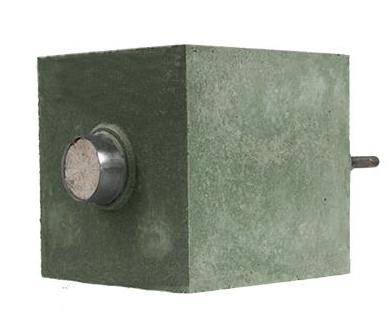- 20
- Sep
How to improve the argon blowing rate of ladle ventilating bricks:
How to improve the argon blowing rate of ladle ventilating bricks:
A: Improve the masonry craftsmanship. Before repairing the tank, investigate and inspect the ventilating bricks. The working surface of the ventilating bricks shall not be less than 30mm from the bottom of the tank to avoid cold steel; check whether the metal hose is burned out and whether the screws at both ends are loose, and deal with it if necessary. In order to ensure the strength of argon blowing and reduce the penetration and blockage of molten steel, check the slit air passage of the ventilating brick with a feeler gauge before masonry, and select ventilating bricks with suitable air passage width under working conditions; check whether the thread of the ventilating brick tail pipe is damaged before masonry. In the process of laying ventilated bricks, it is necessary to ensure that the tail pipe does not enter dust and debris. After the ladle is repaired, the waste on the head of the ventilating brick should be cleaned up.
B: It is better to choose the ventilating bricks that have a longer life span and less steel penetration under certain working conditions.
C: Use carefully. In the process of using ventilated bricks, the flow of argon gas is strictly controlled in different treatment stages to avoid bottom blowing of large flow to accelerate the corrosion of bottom-blowing ventilating bricks. In the process of application, the connection of the gas pipeline is often investigated, and it is found that the joint leaks are dealt with immediately to avoid gas leakage, resulting in a decrease in the pressure in the pipeline, resulting in failure of the bottom blowing.
D: Strengthen the maintenance of breathable bricks. Due to the corrosion of bottom-blown venting bricks, the concave parts are easy to accumulate steel and condense. After the regular pouring of steel, the air source (argon or compressed air) is immediately connected to the ladle rotary table, and the infiltration and bottom-blown venting bricks that are not condensed in the air duct are blown out. Steel accumulation in depressions.
E: In order to prevent molten steel from infiltrating into the breathable brick due to positive pressure in the process of stopping the argon blowing, the equipment on the argon blowing pipeline is equipped with anti-soaking equipment-one-way stop valve, gas bag, etc. An alarm block is set at 150mm from the bottom of the center of the ventilating brick core to ensure that the ventilating brick can be used to the extent that it can be used safely, reducing the leakage of the ventilating brick caused by the error of the ladle inspection, and enabling the ventilating brick to be regular replace. The dynamic management of the ventilated bricks, each link of masonry, application, inspection, blowback, burnback, testing, and dismantling should have detailed records to find problems in time.
F: The purity of argon used for ladle argon blowing and mixing should be 99.99%, and its content should be strictly controlled below the regulated 8ppm. When the argon gas with severe oxygen content exceeds the standard, it will accelerate the high temperature melting loss of the ventilating brick because the oxygen flux on the ventilating brick working surface will cause the life of the ventilating brick to generally decrease, and the severe one will lead to the leakage of the ventilating brick. accident.

